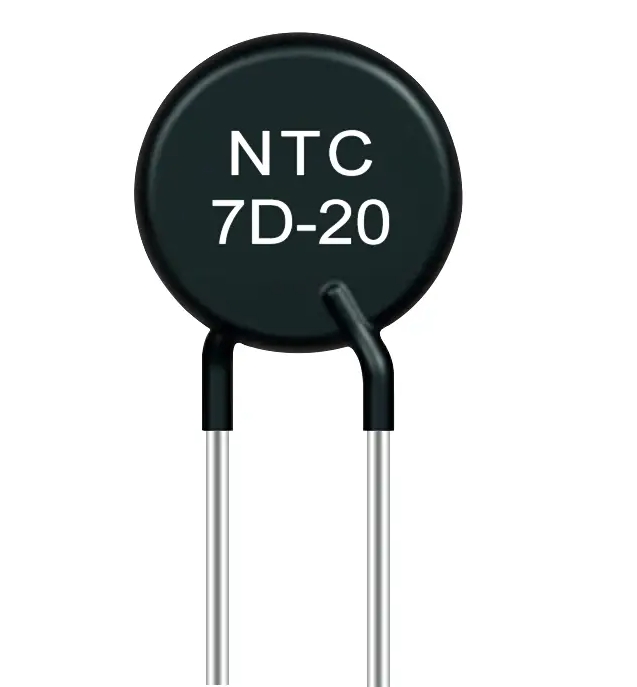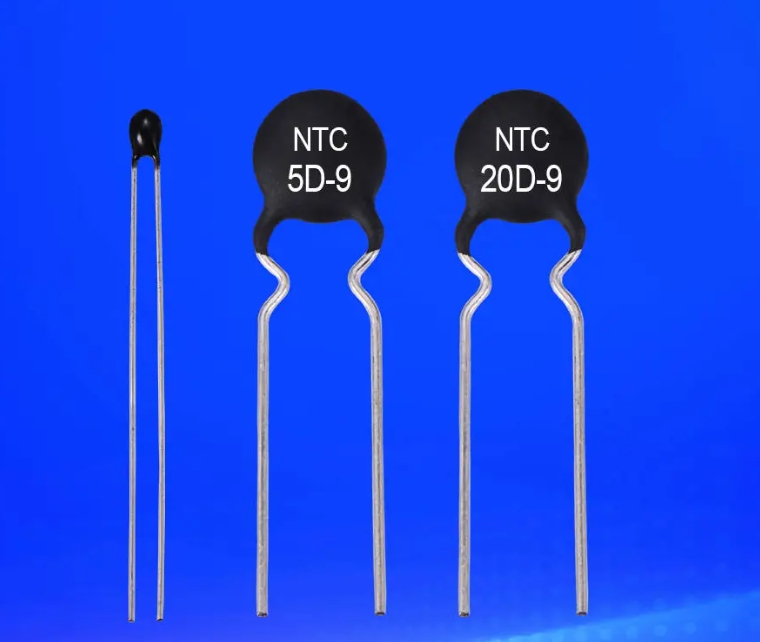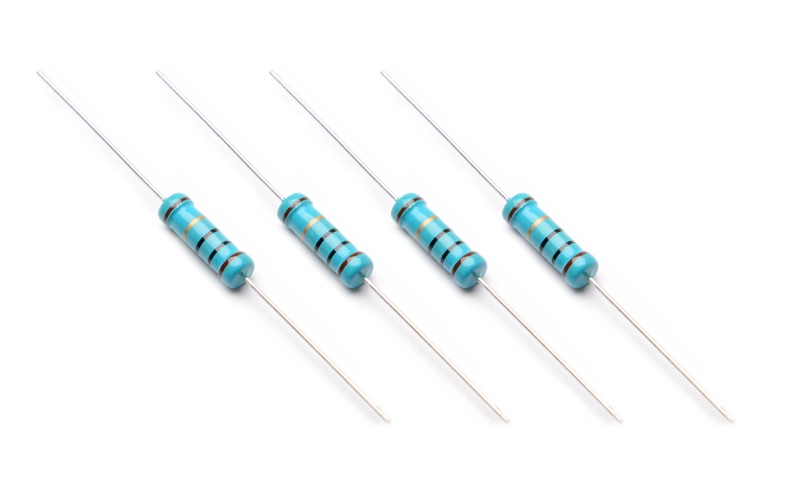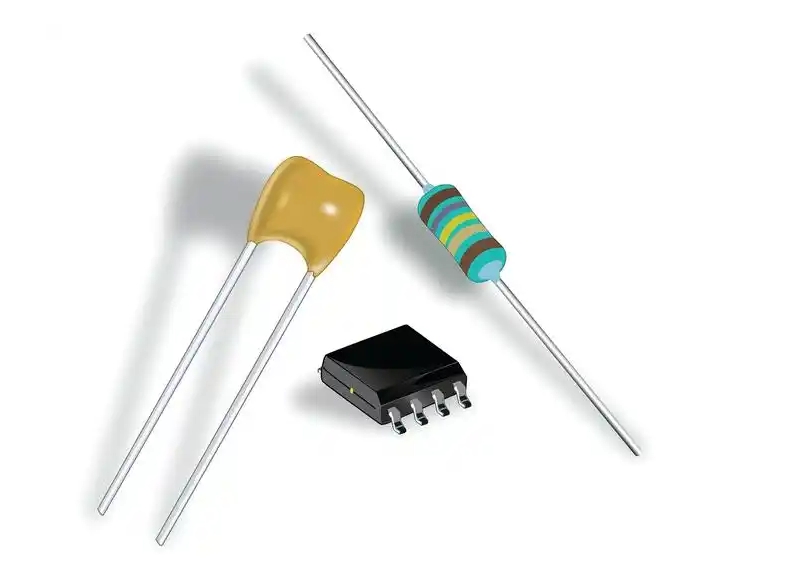What is a thermistor?
Thermistors are sensor resistors whose resistance value changes with temperature. The different temperature coefficients are divided into Positive Temperature Coefficient thermistor (PTC thermistor, that is, Positive Temperature Coefficient thermistor) and Negative Temperature Coefficient thermistor (NTC thermistor, that is, Negative Temperature Coefficient thermistor). Positive Temperature Coefficient thermistors’ resistance value increases with the rise of temperature, and Negative Temperature Coefficient thermistors’ resistance value decreases with the rise of temperature, and they belong to semiconductor devices. They are widely used in temperature detection, temperature compensation, overcurrent protection and other scenarios.
Table of Contents
Thermistor symbols and application formulas
The resistance-temperature characteristics of a thermistor can be approximated by the following formula: R=R0exp{B(1/T-1/T0)}: R: resistance at temperature T(K), Ro: resistance at temperature T0, (K), B: B value, *T(K)=t(ºC)+273.15. The B value of the thermistor is not constant, and the size of its variation varies depending on the material composition. The size of the change varies depending on the material composition, and the maximum can even be up to 5K/°C. Therefore, when applying Eq. 1 in a large temperature range, there will be a certain error between the measured value and the actual value. In this case, if the value of B in Eq. 1 is calculated as a function of temperature as shown in Eq. 2, the error between the measured value and the actual value can be reduced and considered to be approximately equal.
BT = CT2 + DT + E, the above formula C, D, and E a constants. In addition, the fluctuation of B value caused by different production conditions will cause the constant E to change, but the constants C and D remain unchanged. Therefore, when exploring the amount of fluctuation in the B value, only the constant E needs to be considered. Calculation of constants C, D, E. Constants C, D, E can be calculated from the (temperature, resistance value) data of 4 points (T0, R0). (T1, R1). (T2,R2) and (T3, R3), calculated by equations 3 to 6. First, find B1, B2, B3 from Eq. 3 based on the resistance values of T0 and T1, T2, T3, and then substitute them into each of the following equations.
Resistance value calculation example: Try to find the resistance value of a thermistor with a resistance value of 5(kΩ) at 25°C and a B deviation of 50(K) at 10°C to 30°C based on the resistance-temperature characteristic table. Steps (1) From the resistance-temperature characteristics table, find the constants C, D, and E. To=25+273.15T1=10+273.15T2=20+273.15T3=30+273.15 (2) Substitute BT=CT2+DT+E+50 to find BT.(3) Substitute the values for R=5exp {(BT1/T -1/298.15)}, and find R. *T:10+273.15 to 30+273.15.

How Thermistors Work
Thermistors operate based on the temperature-resistance characteristics of semiconductor materials:
- Classification and Characteristics:
- Positive Temperature Coefficient (PTC): Resistance increases with rising temperature (primarily used for overcurrent protection and self-resetting fuses)
- Negative Temperature Coefficient (NTC): Resistance decreases with rising temperature (most common type, widely used for temperature sensing)
- Operational Principle:
Under normal conditions, thermistors remain in a stable state with resistance close to room temperature values. When environmental temperature and current reach critical zone (Region C), the device enters a metastable state where heat dissipation approximates heat generation, potentially triggering activation.
Key operational features:
- At constant ambient temperature, response time decreases exponentially with increasing current
- Higher ambient temperatures result in faster response times and lower holding/trigger currents
- Protection Mechanism:
During normal operation:
- Thermistor temperature approximates ambient
- Low resistance presents negligible impedance to circuit current
During fault conditions: - Overcurrent causes increased power dissipation
- Temperature rises beyond switching threshold (Ts)
- Resistance increases dramatically (orders of magnitude)
- Circuit current rapidly reduces to safe levels
- Advanced Features of Polymer PTC:
- Tunable switching temperature (Ts) allows precise sensitivity adjustment
- Dual-function operation: simultaneous over-temperature and over-current protection
- Excellent design flexibility for customized protection solutions
- Performance Advantages:
- Fast response to abnormal conditions (typically milliseconds)
- Automatic reset after fault clearance
- Long-term stability and reliability
- Compact size for space-constrained applications
What is the function of a thermistor?

- Temperature measurement and control
Temperature Sensors: Thermistors are commonly used in temperature sensors to obtain information about the temperature of an environment or object by measuring changes in their resistance value. For example, in temperature control systems, thermistors detect temperature changes and convert them into electrical signals that are transmitted to the controller to regulate heating or cooling equipment.
High precision measurement: NTC thermistor has a high temperature coefficient and sensitive response to temperature change, it can be used for high precision temperature measurement, such as digital thermometer, thermocouple compensation. - Overheating protection
PTC thermistor: When the temperature exceeds the set threshold, the resistance value of the PTC thermistor increases sharply, thus limiting the current or cutting off the power supply to avoid equipment damage due to overheating. For example, it is used for motor protection in power tools, electric fans, and other equipment.
NTC Thermistors: In battery or power supply circuits, NTC thermistors can be used to monitor the temperature and trigger the overheating protection mechanism. - Current Limiting and Surge Suppression
NTC Thermistor: When the power supply starts up, the cold, high-resistance value of the NTC thermistor suppresses the inrush current and protects the circuit from shock. As the temperature rises, the resistance value decreases, and the current gradually stabilizes.
PTC thermistor: In overcurrent protection, the resistance value of the PTC thermistor rises with the increase of current, thus limiting the current and acting as a self-recovery fuse. - Temperature Compensation
Circuit stability: Thermistors can be used to compensate for the effect of temperature changes on circuit performance. For example, in transistors, oscillators, or batteries, temperature drift is counteracted by changes in the resistance of the thermistor, improving the accuracy and reliability of the circuit.
Precision instruments: In equipment that requires stable operation, thermistors help maintain a constant operating temperature. - Other Applications
Constant temperature heating: PTC thermistors can be used as heating elements, such as air warmers, soldering irons, etc., with both temperature control functions.
Filtering and Noise Suppression: In some high-frequency circuits, thermistors can be used to suppress noise and overshoot signals.
Do thermistors have polarity?
Thermistors do not have polarity. The main characteristic of thermistors is that they change their resistance value as the external temperature changes, and this characteristic makes thermistors very important in various applications. Specifically, thermistors are categorized into two types: positive temperature coefficient (PTC) and negative temperature coefficient (NTC):
NTC thermistors: Their resistance value decreases significantly with increasing temperature, with a typical rate of change of 3% to 7% per degree Celsius. For example, an NTC sensor with a resistance value of 10kΩ at room temperature (25°C) may drop to 3kΩ~5kΩ when the temperature rises to 50°C.
PTC thermistor: Its resistance value increases with temperature. This characteristic makes PTC thermistors very useful in applications such as overcurrent protection, temperature compensation, etc.
Precautions for using thermistors
The following points should be noted when using thermistors:
Circuit connection: Thermistors need to be connected to external circuits such as a power supply and a signal amplifier. When connecting, you need to check the circuit diagram carefully to ensure that the power supply polarity is correct and the signal wires are connected correctly to avoid damage caused by over-current shock.
Temperature range: Thermistors have their own specific temperature range, and different models have different temperature ranges. When using the thermistor, you should check its temperature range to ensure that it is used under the appropriate temperature conditions, to avoid damage or inaccurate measurement caused by exceeding the applicable range.
Mechanical pressure: Thermistors are sensitive to mechanical pressure, so they should be handled gently during installation or use to avoid excessive mechanical pressure or impact, so as not to affect the accuracy and stability of measurement.
Environmental impact: Thermistors should avoid the environment of rapid temperature changes to prevent the aging process. At the same time, attention should be paid to waterproof, moisture resistance, cold resistance, and other properties, to ensure stable and accurate measurement results
Measurement conditions: Measurement should ensure that the ambient temperature is close to 25℃ to ensure the credibility of the test. Measurement power shall not exceed the specified value to avoid the error caused by the current thermal effect
Electromagnetic induction: The resistance value of the thermistor is large and susceptible to electromagnetic induction. Shielded wire or two leads can be twisted into one to reduce the impact of
Regular calibration: Calibrate the thermistor regularly to ensure the accuracy of measurement. Avoid mechanical damage, such as excessive bending or impact.

Application Areas
Thermistors are widely used in various fields due to their unique temperature-sensitive characteristics:
Temperature measurement and control: Used for temperature measurement and control in home appliances, automotive, medical equipment, industrial automation, and other fields. For example, automobile engine temperature, air conditioning system temperature, water heater temperature, etc.
Environmental monitoring: for indoor temperature monitoring, climate control systems, greenhouse temperature monitoring, etc.
Electronic equipment protection: used in electronic equipment for overheating protection, when the temperature of the equipment exceeds the set threshold, the resistance value of the thermistor will change, thus triggering the protection mechanism to prevent the equipment from overheating and damage.
Medical field: used in thermometers, blood pressure monitors, infusion equipment and other medical equipment to measure and monitor temperature
Industrial automation: for furnace temperature control, liquid measurement, cooling systems, etc.
Energy management: used in energy management systems such as solar water heaters, solar power systems, etc. to monitor and control the generation and use of energy.
